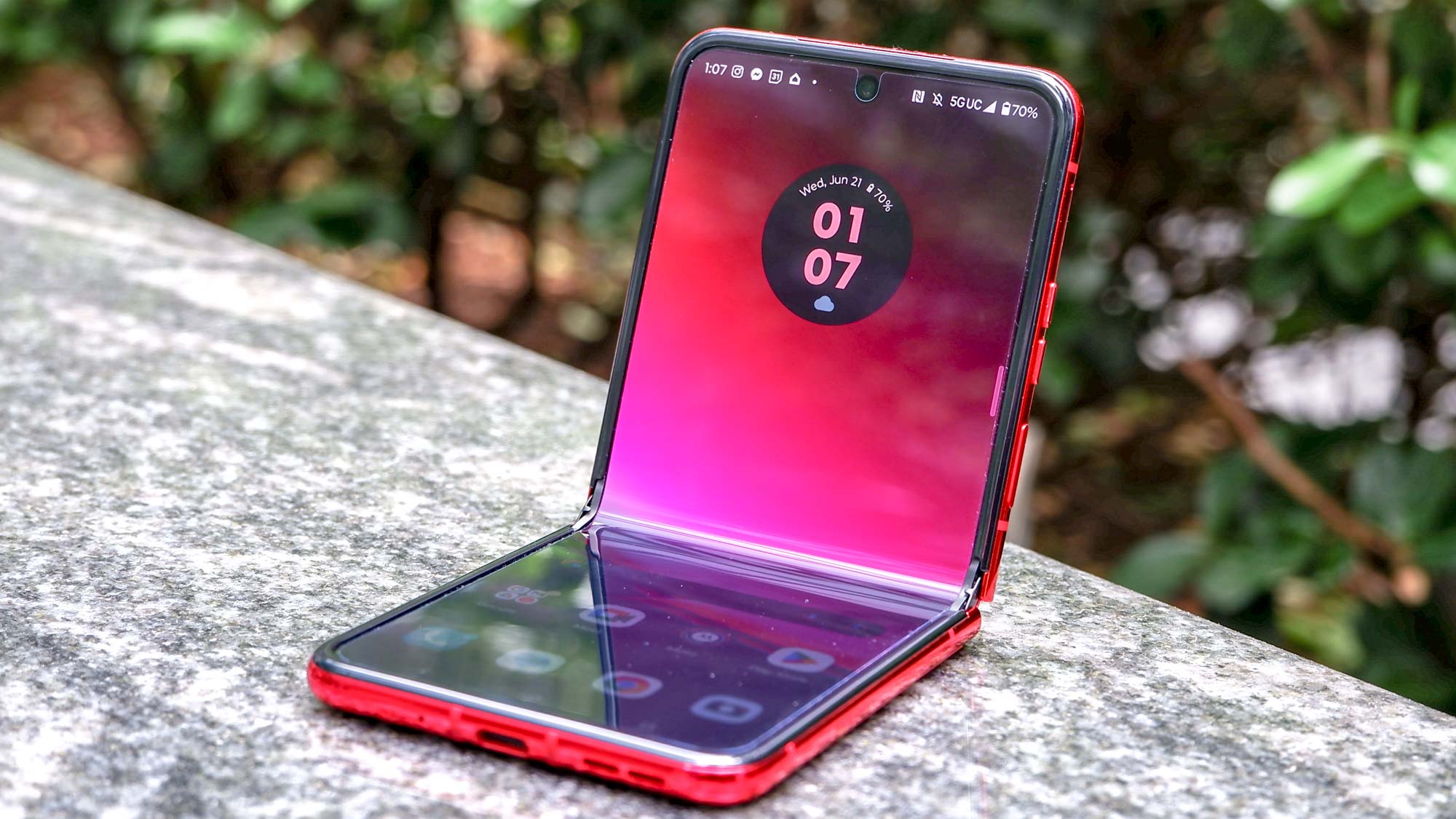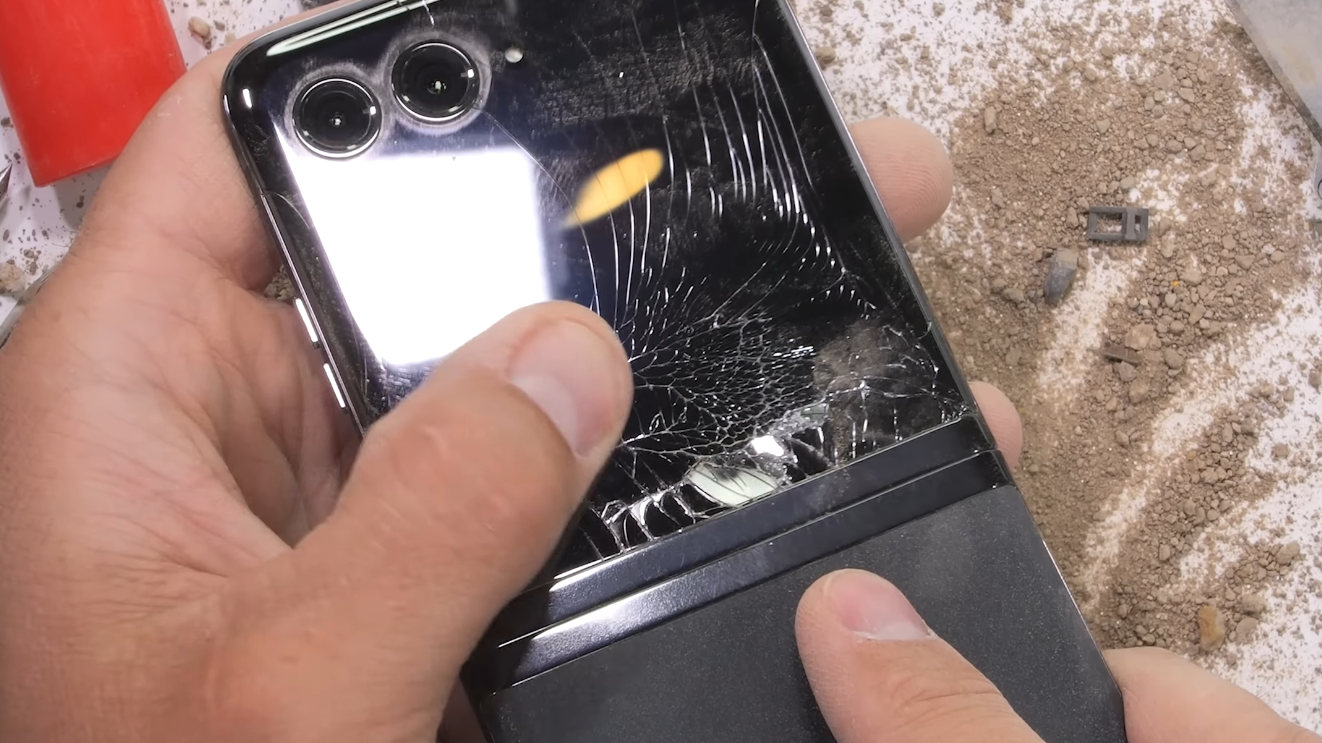Motorola Razr+ torture test ends in an unexpected way
The foldable screen is fine, but the external one is not

Whenever a new smartphone comes out, you can rely on the YouTuber JerryRigEverything to torture the devices in the name of durability testing so that you don’t have to.
Foldables are especially vulnerable to the "bend test" (which includes bending the phone in the opposite direction it was designed for), as we saw with Google's Pixel Fold in the YouTuber’s previous video. But even flat phones aren’t immune from being literally torn in half as the OnePlus 10 Pro discovered last year.
The strange thing about the Motorola Razr+ is that, unlike the Pixel Fold, its folding internal screen passes the bend test with flying colors. But in the process, the flat external screen caves in.

You can see the moment in the video at 6:03 point in the embedded video.
“Not only is it shattered, but it’s also caved in,” says JerryRigEverything while digging away at the loose glass with a penknife. “There is a hollow void behind the screen that succumbed to the pressure of my thumb and shattered inward, creating a thumb-sized concave crater.
“Never have we ever been able to break a screen with a single finger,” he continues. “Judging by the size of the void, I don’t think it had as much to do with the force of me bending the phone, but more just with nothing being back there to support the glass.”
This is a surprise. Most smartphones make use of every cubic millimeter of space to eke out as much battery life as possible. To find a gap is unusual, to say the least — especially one that makes the handset structurally weaker as a result.
Sign up to get the BEST of Tom's Guide direct to your inbox.
Get instant access to breaking news, the hottest reviews, great deals and helpful tips.
“Glass is glass, and without proper support, it’s just asking to become a thousand-dollar single-use fidget bumper,” JerryRigEverything concludes
Despite the external screen breaking, the internal one refused to give way with extended bending afterward, which puts the Motorola Razr+ in a confusing place.
Yes, it technically still functions in a way that the Pixel Fold doesn’t. But, unlike most of JerryRigEverything’s tests, if the external panel succumbs to pressure so easily, then this could potentially be a real-world problem for buyers who don’t treat the handset with the utmost care.
In other respects, the Razr+ comes out reasonably well relative to other devices. The external screen scratches at levels 6 and 7 of Moh’s scale of hardness, while the flexible inner screen reaches levels 2 and 3 because it’s naturally softer to allow it to bend. The phone even passes the "sand in the hinge test" (which is...well, the name is pretty self-explanatory) — something that a previous Motorola foldable failed.
As for the phone itself, we declared it a big step forward in our Motorola Razr+ review, giving it a solid four stars. “It’s not the perfect foldable, but it’s definitely a marked improvement and sets the standard for all other clamshell foldables coming out the rest of the year,” concluded our senior channel editor for phones, John Velasco.
Freelance contributor Alan has been writing about tech for over a decade, covering phones, drones and everything in between. Previously Deputy Editor of tech site Alphr, his words are found all over the web and in the occasional magazine too. When not weighing up the pros and cons of the latest smartwatch, you'll probably find him tackling his ever-growing games backlog. Or, more likely, playing Spelunky for the millionth time.

